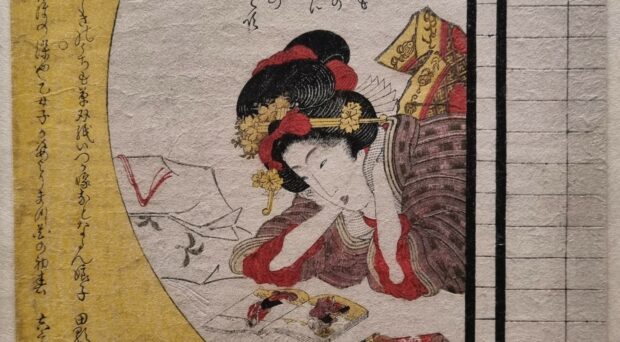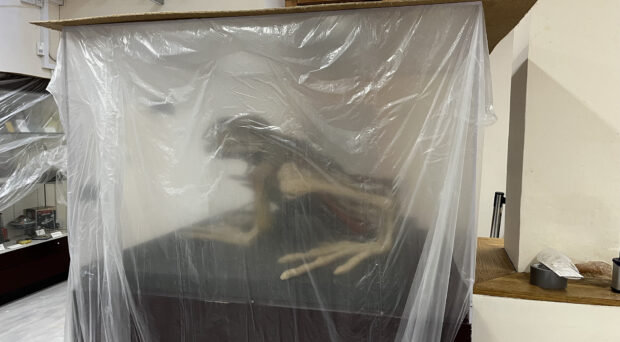Nicola Wallis reports on the BRIC Conference, for those involved with early childhood education and care to discuss the promotion of very young children’s democratic engagement in civic society by regular visits to public spaces – including museums.
This conference was a culmination of the EU-funded BRIC Project, which has spent the last three years investigating young children, democracy and public spaces in England, Sweden and Italy. Using a methodology based on polyvocal participatory action research, preschool teachers researched and documented ways in which very young children can become active and visible citizens in public space, and what this means for policy and pedagogy in the future. Nicola Wallis, a Museum Educator at the Fitzwilliam Museum who also works as a Nursery Teacher, was a lead teacher on this project, and presented at the conference describing the ongoing relationship between her preschool class and a medieval Tithe Barn who share the same village just north of Cambridge.

The people
The project was steered by Research Directors from each of the three countries:
- Professor Tim Waller, from the Children and Youth Research Institute at Anglia Ruskin University
- Patrizia Benedetti, from the Progettinfanzia in Bassa Regianna, Reggio Emilia
- Monica Halborg from Barnpedogogiskt Forum in Gothenburg
Six lead preschool teachers from each country received training in appropriate research methodologies and guided the project in their own communities. Preschool teaching colleagues, parents, local politicians, community members and of course the children, all had a voice in how the project developed, which mean that there was huge local variation in terms of the actual activity.
The project
The preschool settings took the children (3-4 year olds in the first cycle, and then 1-2 year olds) out into the community, not as they might have done previously, thinking of these outings as special trips or one-off visits. Now the outings happened much more regularly, visiting the same place over and over again. Sometimes these places were what we might think of as destinations – a theatre, a park, a museum – but some preschools chose more ordinary places: a town square, a pavement, or an underpass. Often there was no planned outcome or activity from the adults – it was simply an opportunity for the children to explore and come to know a place.
These outings were carefully documented by both adults and children, and the project archive is now bulging with videos, photographs, voice recordings and artwork inspired by these visits. Every four months the preschool teachers would take part in a study exchange to see first hand what was happening in the partner countries, and to reflect together on the highlights and progress of the project. In this way, colleagues were able to learn from each others’ experiences, and to see how their own practice might be understood through a different cultural lens.
The purpose
At the heart of the project was a desire to move away from the view that young children need to be locked away from view in preschools and nurseries, whether for safety or convenience. Instead, there was a need to reintegrate children back into their communities – to demonstrate how they can be included as competent agents in public life.
With this in mind, the research focused in on two key themes: community engagement and traces. These were explored at every level of the project from individual visits to international conferences. As the project developed, and children spent more and more time in the public spaces, these themes became increasingly significant: traces developed from simple temporary signs that children had been in the place, to permanent exhibitions about the projects, and celebrations and performances that might previously have taken place hidden from view inside the preschools, moved out into public spaces and involved a far wider range of people.
Community engagement began with simple smiles and questions from passers-by and has progressed to local national initiatives. A fantastic example is the Swedish company Jernhusen, who, inspired by preschoolers’ regular visits to Gothenburg Central Station, are planning an urban gardening programme across all the stations they manage. The intention is that from a very young age, children will come to understand the train stations as places where communities meet and work together, promoting tolerance and civic involvement through sharing a space.

The potential
So what does this mean for museums? Some preschoolers did spend time in museums as part of this project – the Fitzwilliam Museum in England, Göteborgs Stadsmuseum in Sweden, and Museo Della Terramara Santa Rosa di Poviglio in Italy, but there is still much more we can do. The importance of listening to children, responding to their ‘one hundred languages’ as our Reggio Emilia colleagues would say, was paramount. Rather than having set routes and outcomes in mind, the adults followed the children’s lead: watching, listening, documenting. Quickly we all realised that we were seeing places anew through the children’s eyes. Imagine the power of this in a museum or exhibition context – what might we be missing because of overfamiliarity? Can children help us to make new discoveries about “our” spaces? At the Fitzwilliam Museum we have been experimenting with ways of enabling children to shape their own experience of the museum, particularly in the Creative Families Course (see previous blog posts), and we really have all learned new things together.
In terms of leaving traces, again the Fitzwilliam Museum is beginning to demonstrate ways that children’s presence can be felt even when they are not physically in the building. Art work inspired by a museum visit of pupils from St Luke’s Primary School is currently on display alongside works from the permanent collection, and our most recent gallery guides and family trail have been developed with ideas and contributions from young people taking part in our Make/Resource programmes and children from King’s Hedges Educational Foundation.
How might this develop in the future? How might people of all ages make an active contribution to what the museum is, and what it will become?
Museums are ideally placed for supporting community engagement – how can we use our spaces and collections to bring people together, particularly perhaps the very young and the very old who are so often separated off from other members of society? There is so much more to explore – the end of this project certainly feels like the start of something even bigger!







